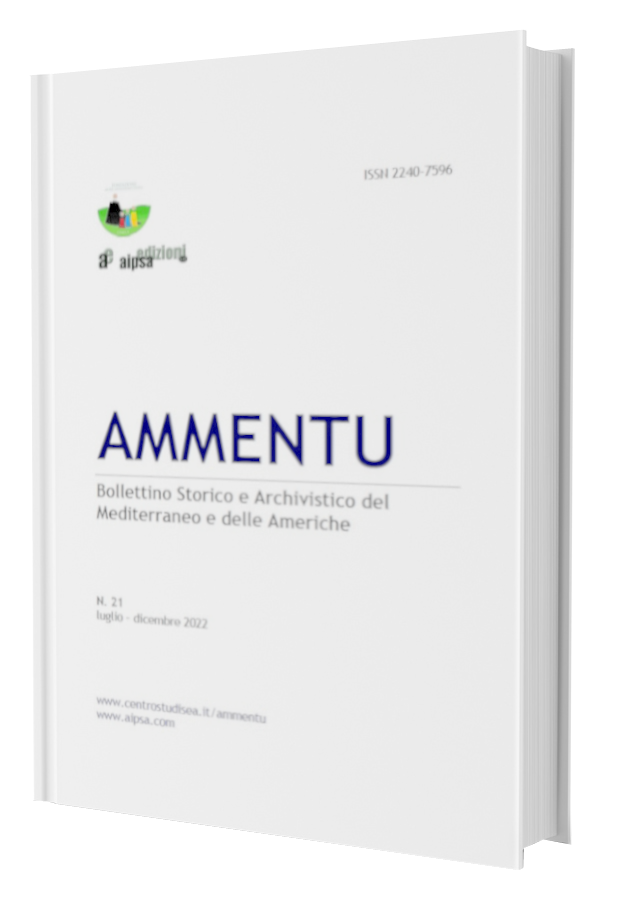Historical notes for a local project. The hill of Monreale, the thermal baths of Santa Mariaquas and the mines of Sardara
##plugins.pubIds.doi.readerDisplayName##:
https://doi.org/10.19248/ammentu.447Abstract
The Monreale hill has a significant historical and simboli value for the populations of the surrounding settlements. Frequented since the Nuragic age, it has gone through all the historical phases of the island. Evidence of this is the castle, built between the 13th and 14th centuries, a defensive bastion of the giudicato of Arborea and later a tangible sign of the feudal power of the Carroz di Quirra.
In the 19th century, mining activities developed in the hills, reaching their peak in the 20th century with the Monreale and Perda Lai mines. With the crisis of the 1970s, which affected the entire mining sector, the two mines closed down, leaving us with a great heritage of industrial archaeology.
At the base of Monreale there is the thermal area of Santa Mariaquas, with the spring complex and the 19th century building incorporating the Roman baths. Frequented both in Roman times and during the Judicial period, the history of the thermal baths had its revival in the 19th century, when, after several failed attempts, the entrepreneur Filippo Birocchi and the engineer Giorgio Asproni junior intervened. The early 20th century saw the birth of the new spa, which changed hands in the 1920s to the Rodriguez family and in the 1950s to the Mossa family.
The valorisation of the area must be seen in its historical, archaeological and environmental complexity, with innovative and sustainable tools, such as the creation of an eco museum or a historical, cultural and natural park.
##submission.downloads##
Pubblicato
Fascicolo
Sezione
Licenza
Nota di copyright (=>sc)
Le informazioni sul copyright inserite sotto compariranno tra le informazioni della rivista e nei metadati di ciascun articolo pubblicato. Sebbene una rivista sia libera di determinare forma e sostanza del copyright agreement con i suoi autori, il Public Knowledge Project suggerisce l'uso di una licenza Creative Commons license. A tal fine, fornisce un esempio che puo essere copiato e incollato nello spazio qui sotto per le riviste che (a) offrono open access, (b) offrono delayed open access, or (c) non offrono open access. (=>sc)









